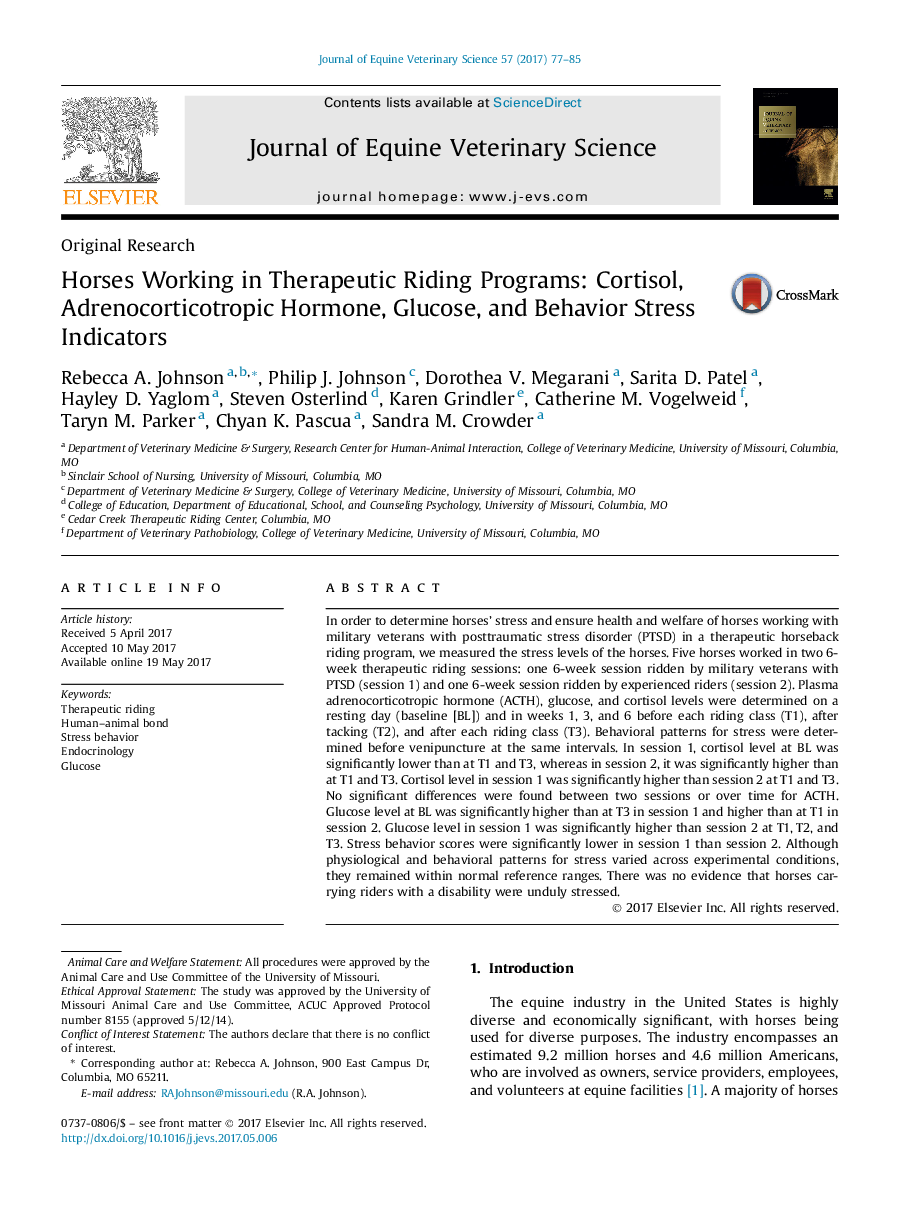| کد مقاله | کد نشریه | سال انتشار | مقاله انگلیسی | نسخه تمام متن |
|---|---|---|---|---|
| 5535674 | 1551543 | 2017 | 9 صفحه PDF | دانلود رایگان |
- Horses ridden by veterans with posttraumatic stress disorder (PTSD) did not have physiological stress responses.
- Horses ridden by veterans with PTSD did not exhibit behavioral stress responses.
- Therapeutic horseback riding may provide a viable repurposing for retired or unwanted horses.
In order to determine horses' stress and ensure health and welfare of horses working with military veterans with posttraumatic stress disorder (PTSD) in a therapeutic horseback riding program, we measured the stress levels of the horses. Five horses worked in two 6-week therapeutic riding sessions: one 6-week session ridden by military veterans with PTSD (session 1) and one 6-week session ridden by experienced riders (session 2). Plasma adrenocorticotropic hormone (ACTH), glucose, and cortisol levels were determined on a resting day (baseline [BL]) and in weeks 1, 3, and 6 before each riding class (T1), after tacking (T2), and after each riding class (T3). Behavioral patterns for stress were determined before venipuncture at the same intervals. In session 1, cortisol level at BL was significantly lower than at T1 and T3, whereas in session 2, it was significantly higher than at T1 and T3. Cortisol level in session 1 was significantly higher than session 2 at T1 and T3. No significant differences were found between two sessions or over time for ACTH. Glucose level at BL was significantly higher than at T3 in session 1 and higher than at T1 in session 2. Glucose level in session 1 was significantly higher than session 2 at T1, T2, and T3. Stress behavior scores were significantly lower in session 1 than session 2. Although physiological and behavioral patterns for stress varied across experimental conditions, they remained within normal reference ranges. There was no evidence that horses carrying riders with a disability were unduly stressed.
Journal: Journal of Equine Veterinary Science - Volume 57, October 2017, Pages 77-85
